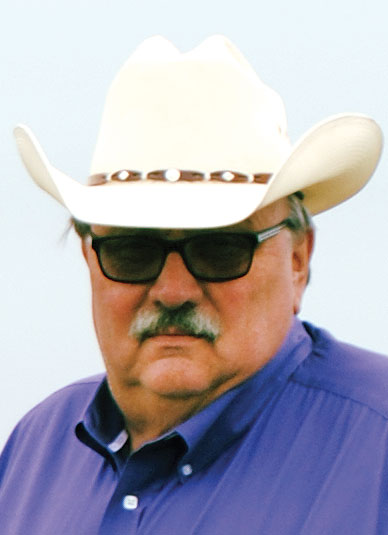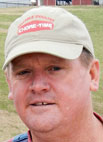
Mark Sexton was raised on a small commercial Hereford farm but gained most of his early knowledge and interest from his cousins, the Wilkins Brothers, of Bluejacket, Okla., where he worked at their 500-head club calf cowherd.
He attended Northeast Oklahoma A&M College in Miami, Okla., studying animal science. Matt has been the ranch manager for Three Forks Ranch, which is owned by Paula and Paul Moor, for the last 14 years. He had previously sold semen and met the Moores while synchronizing and breeding their cows.
One reason he especially enjoys his current position at the Black Angus breeding stock ranch is that he is able to combine his genetic skills along with his management and cattle expertise because the ranch offers AI to bull customers as part of customer service. Sexton assists these existing bull customers with bull selection, natural service and the AI bulls, as well as synchronization and arm service for females.
The ranch annually sells 175 breeding age bulls, as well as bred and open heifers, and registered Angus cows.
“We sell the 5-year-olds every year,” Mark said. “They are in the prime of their life.”
When selling bulls, the ranches often maintains as much as a one-third interest so it can use the semen to maintain carefully developed genetics, as well as receive a percentage of the semen revenue.
Selling the cows means the 350-head herd is constantly changing. One reason for waiting until the cows are 5-years-old is that 2-year-olds are the hardest to breed because they are still growing.
“We get them through the terrible twos,” Matt said. “We breed with emphasis on calving ease and yearling growth, but maintaining phenotype as the main breeding decision.”
Matt’s expertise in AI, was supported by being involved in a breeding project in Russia, as well as the historically largest breeding project in North America in 2015 at Cactus Feed Yard in Syracuse, Kan.
“What allows me the flexibility to manage both the ranch and the AI service is good help,” Matt said. “I am fortunate enough to have two highly-skilled ranch hands that I am able to depend upon with complete confidence.”
Matt has initiated a number of improvements since taking over the operation. The registered Angus herd had only five registered mommas when he arrived, but now broadcasts its annual production sale on Superior Livestock Auction or can be attended during the sale at the ranch, in Fort Gibson, Okla., each March.
A significant change has been in land usage on the 2,300-acre spread.
Bull calves are developed on corn silage when weaned. The corn is raised on 60 acres, which is sufficient for the operations’ needs. The silage is harvested by an Amish enterprise that chops and bags the feed. Hay ground is leased according to need and often contains oats, wheat and rye. Only hay ground is fertilized with a commercial fertilizer and broadcast sprayed in the spring.
“Spraying is a once and done deal,” Matt said.
Pastures are improved with Bermuda and contain some Fescue.
Another improvement is a goat grazing project that started last spring. The ranch has 1,500 usable acres, and Matt is using 50 nannies to clear further acreage. One-hundred and fifth acres are currenlty fenced in for the project, with plans for more goats to be added in the spring.
Billy access to the herd is controlled with kids arriving twice a year. Once the goats have cleared the area, undesirable trees will be sheared off with the goats being allowed to eat the tops. Then debris will be piled up and burned with useful trees allowed to remain as shade and possibly part of the annual pecan harvest.
Health protocols include the use of products as recommended by their veterinarian. They also use a cultured pink eye vaccine that has proved to be highly effective. Cows and their calves receive a fly tag when their calves are weaned, a process supported by misting throughout the summer as needed. Cattle receive supplements, including minerals and protein in tubs or pellets.
“The biggest challenge I have is that the ranch sits on a rock pile,” Matt said. “Our neighbor to the west is actually a rock quarry. What this means is that we have little topsoil so holding water can be difficult during dry spells.”
The ranch pastures contain ponds, but troughs use rural waterers as their water source.
Mark has four daughters, Bailey, Emiley, Riley and Avery Jo. The youngest daughters, Riley and Avery Jo, show cattle at the local and state fairs. They currently have two Charolais and one Black Angus for showing.







